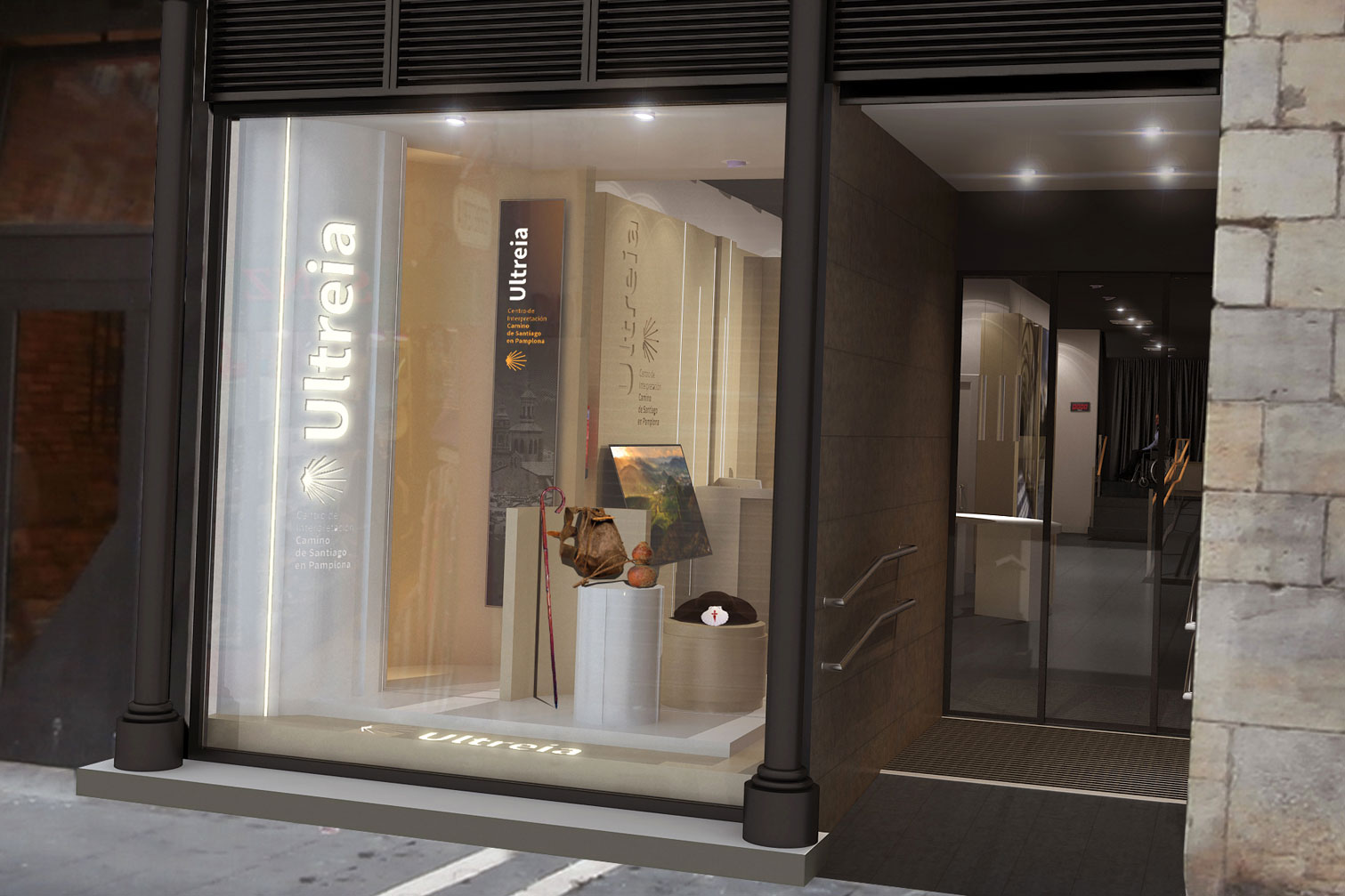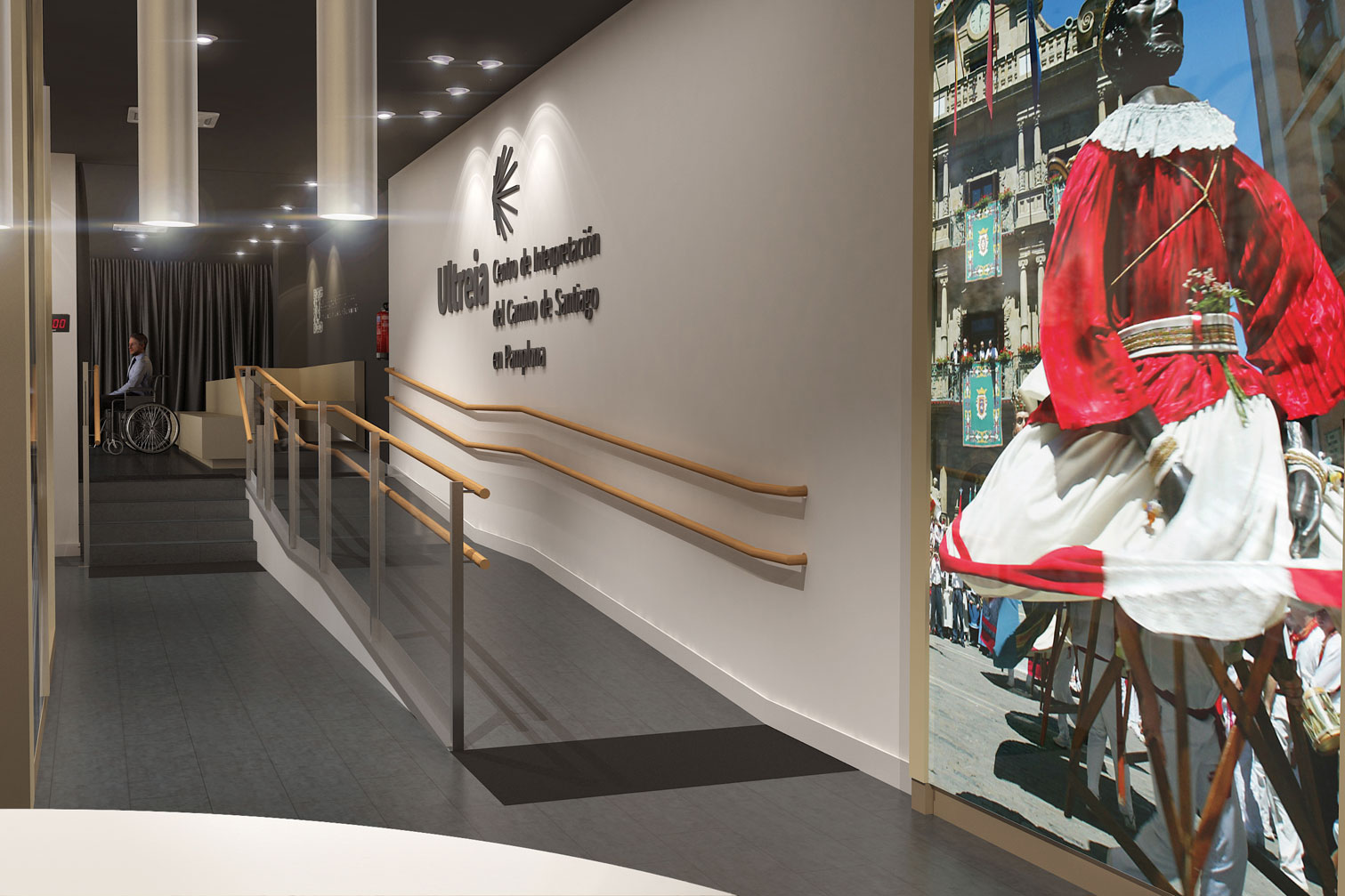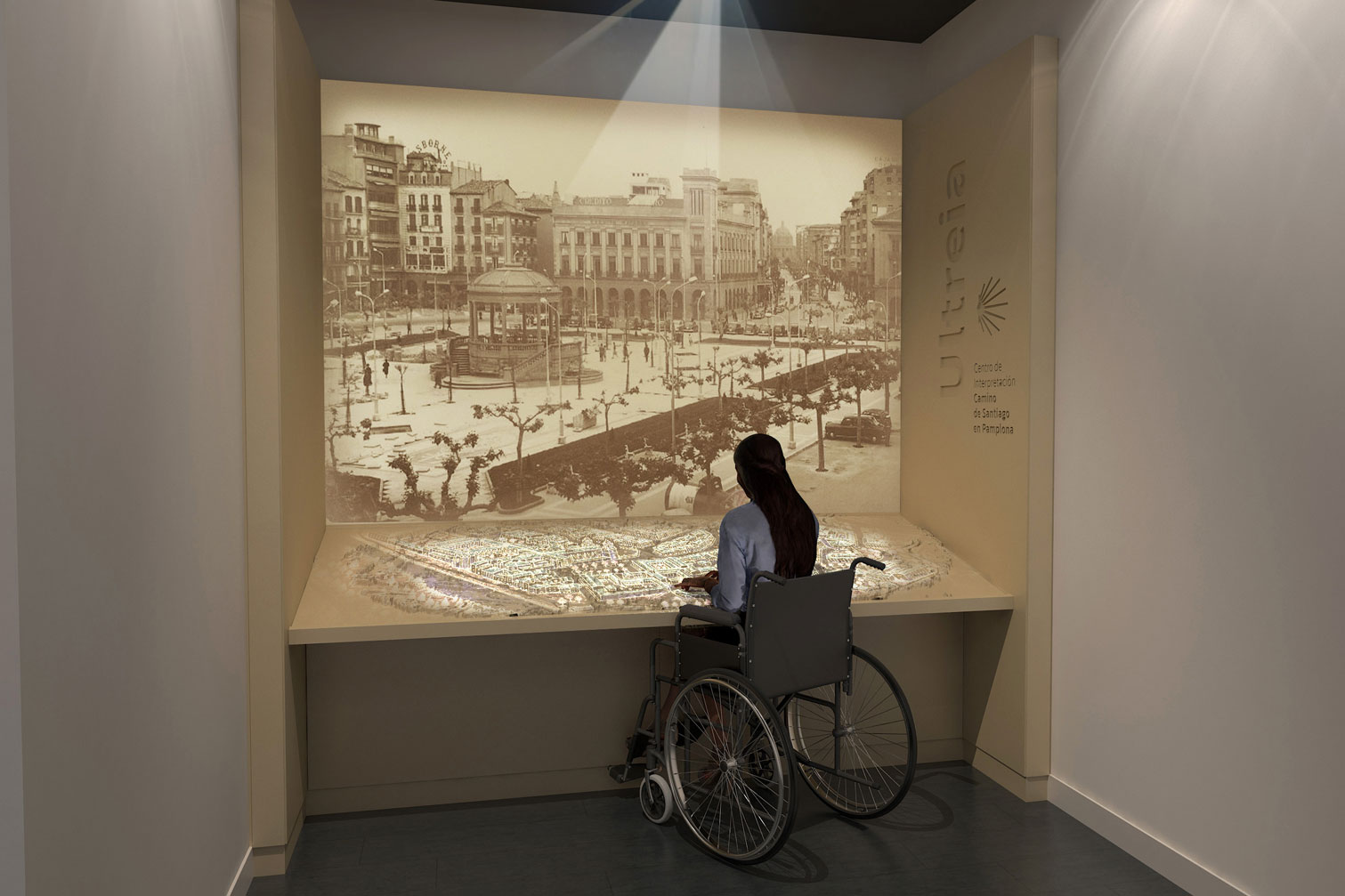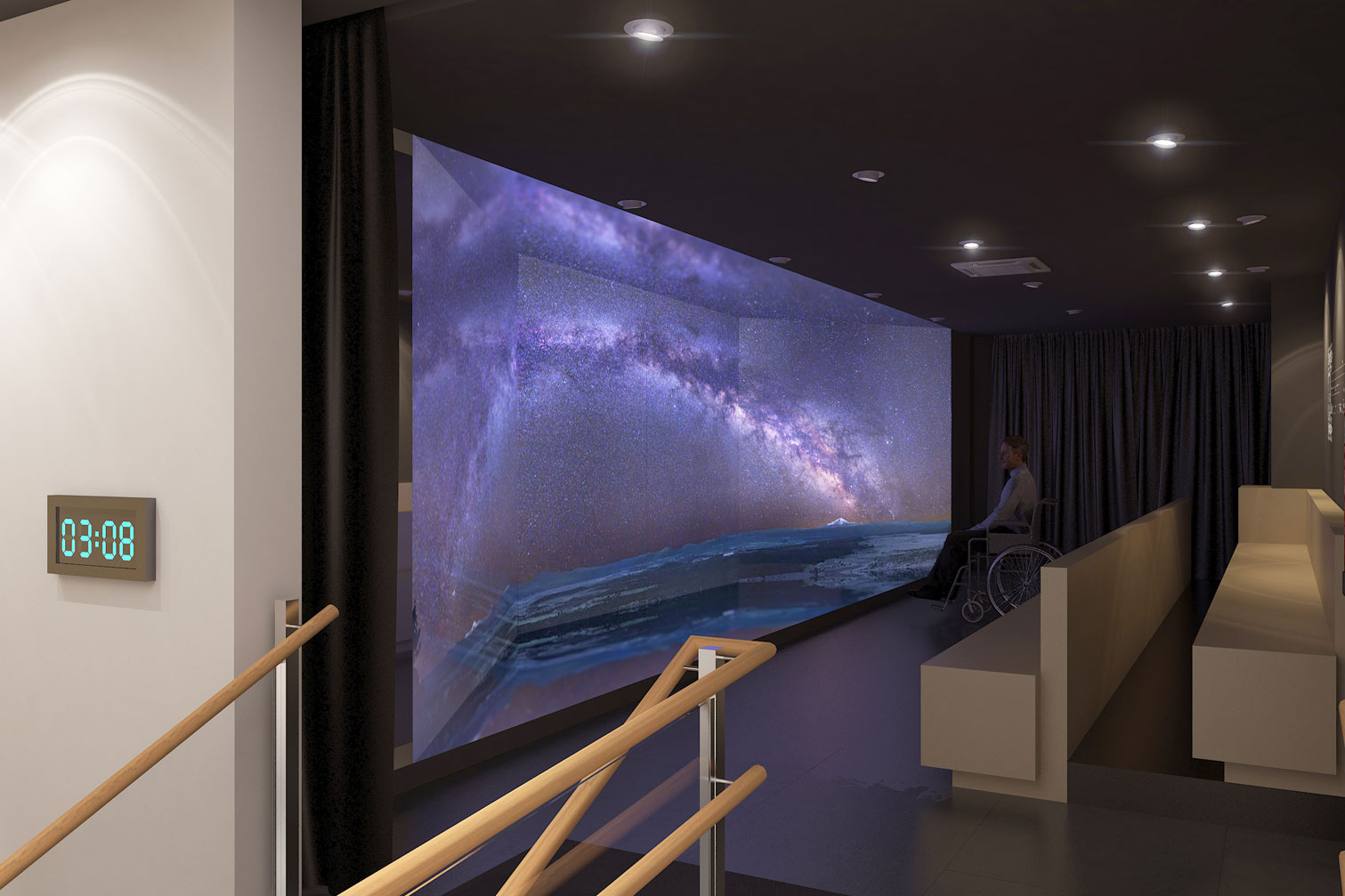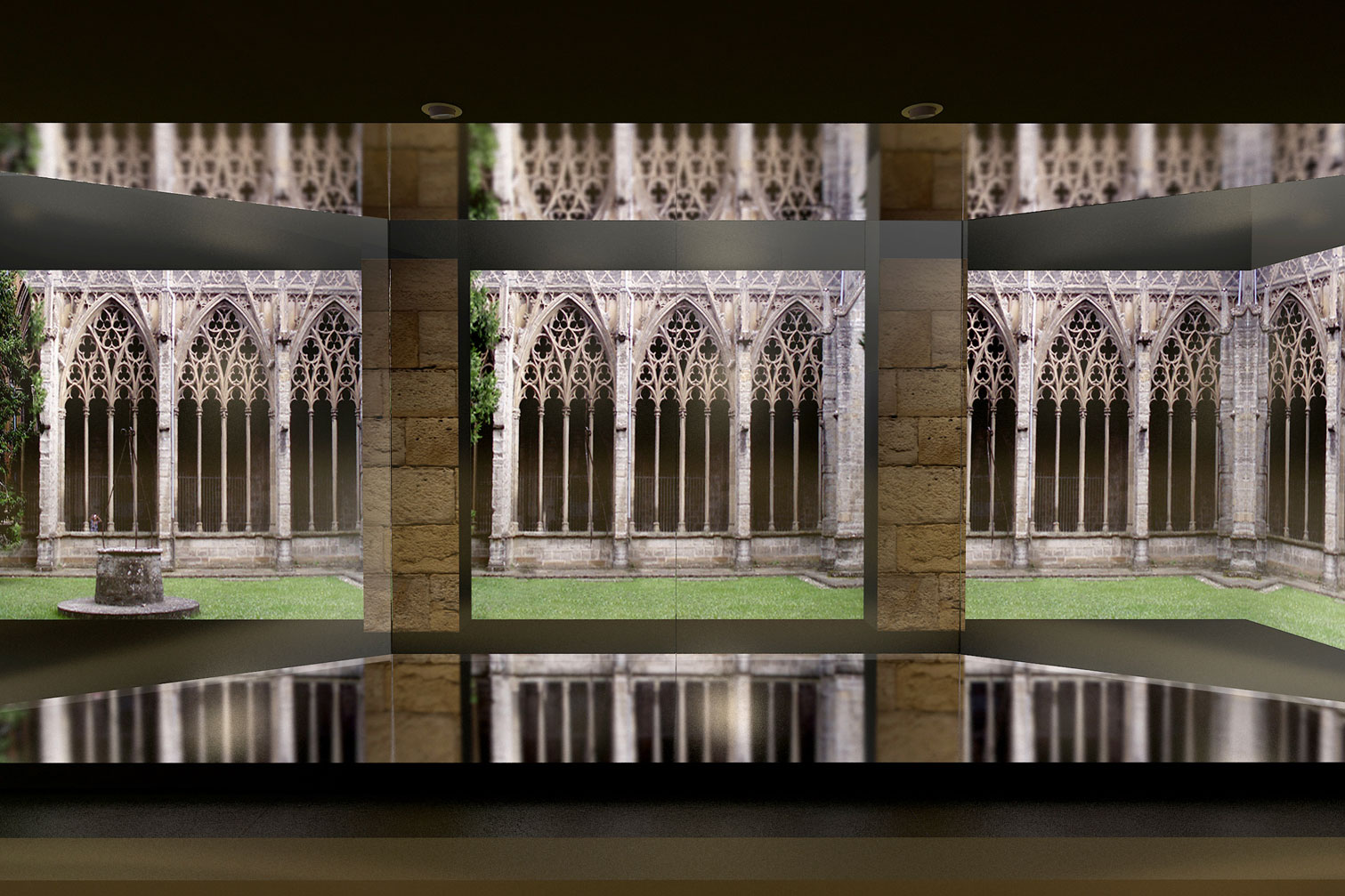- Grup Transversal carries out the project for Andorra's MW Museum of Electricity
- Grup Transversal will direct the museographic renovation of the Gaudí House at Park Güell
- Grup Transversal will carry out the National Archaeological Museum of Tarragona (MNAT)
- Transversal has won, together with Tigrelab, the project to create and produce a new 4D film for the Tibidabo Amusement Park
Camino de Santiago Interpretation Centre
Client:
Pamplona Council
Date:
2018
Location:
Pamplona-Iruña
Ultreia: a unique interpretation centre committed to universal accessibility
Grup Transversal has designed an interpretation centre for the Camino de Santiago in Pamplona-Iruña. It’s called ‘Ultreia’ (a greeting among pilgrims on the Camino) and its main aim is to show what society, culture and the Camino were like in the Middle Ages and also today, using different museographic resources and new technologies. The centre has two main aims: to become a model of universal accessibility among interpretation centres and also a model of formal innovation, with the greatest possible appeal within the bounds of the project’s budget. The project’s three initial premises have therefore been universal accessibility, content prepared with the utmost care, and a modern and attractive visual design.
Grup Transversal defines its project as a visitor experience that goes beyond what can be found in most of today’s interpretation centres. The immersive and interactive experience of the narrative is particularly noteworthy. It’s an essential aspect of the project, manifested in all its glory in the final multi-projection room. This space provides experiences of historical knowledge by recreating history and traditions in a way that envelops visitors, who become familiar with little-known aspects of the Camino de Santiago as it passes through Pamplona-Iruña, as well as its most important people.
It’s also worth noting the tangible (and fully accessible) experience visitors can have through the model onto which light and sound effects are projected. On this tactile display, audiovisual projections help to contextualise the elements and complement them. The centre’s content also uses technology to make the culture, history, art, heritage, traditions and customs of the Camino accessible to people with disabilities, providing information on the unique qualities and values of the region such as its gastronomy, countryside and folklore.



